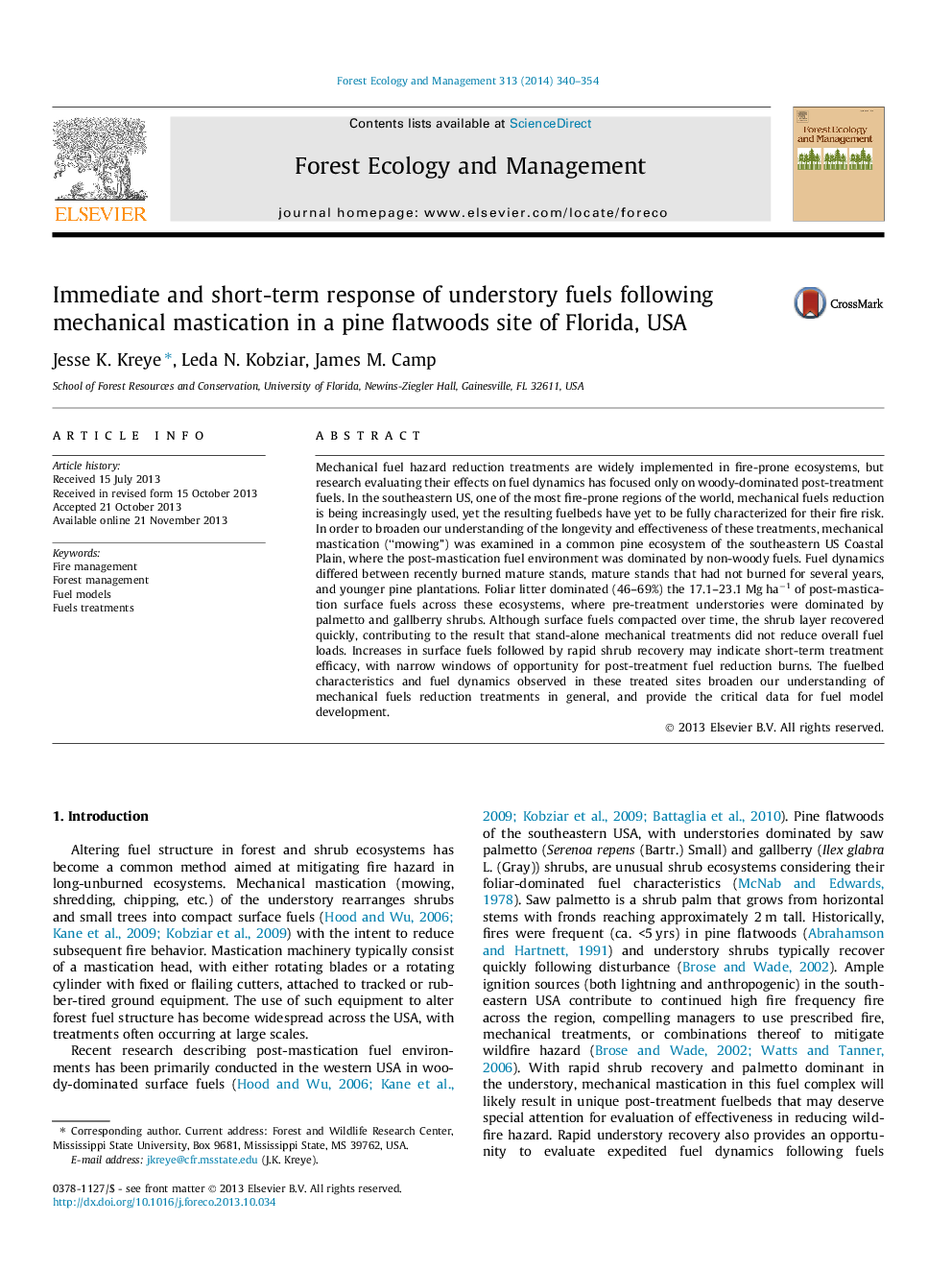| کد مقاله | کد نشریه | سال انتشار | مقاله انگلیسی | نسخه تمام متن |
|---|---|---|---|---|
| 86609 | 159199 | 2014 | 15 صفحه PDF | دانلود رایگان |
• We characterize fuelbeds following mastication in a southern US pine forest.
• We highlight differences in fuel dynamics across 3 pine flatwoods stand types.
• Fuel structure is rearranged and litter dominates surface fuels.
• Rapid shrub recovery increases total fuel loading over time.
• Treatment efficacy may be short-lived due to fuel dynamics.
Mechanical fuel hazard reduction treatments are widely implemented in fire-prone ecosystems, but research evaluating their effects on fuel dynamics has focused only on woody-dominated post-treatment fuels. In the southeastern US, one of the most fire-prone regions of the world, mechanical fuels reduction is being increasingly used, yet the resulting fuelbeds have yet to be fully characterized for their fire risk. In order to broaden our understanding of the longevity and effectiveness of these treatments, mechanical mastication (“mowing”) was examined in a common pine ecosystem of the southeastern US Coastal Plain, where the post-mastication fuel environment was dominated by non-woody fuels. Fuel dynamics differed between recently burned mature stands, mature stands that had not burned for several years, and younger pine plantations. Foliar litter dominated (46–69%) the 17.1–23.1 Mg ha−1 of post-mastication surface fuels across these ecosystems, where pre-treatment understories were dominated by palmetto and gallberry shrubs. Although surface fuels compacted over time, the shrub layer recovered quickly, contributing to the result that stand-alone mechanical treatments did not reduce overall fuel loads. Increases in surface fuels followed by rapid shrub recovery may indicate short-term treatment efficacy, with narrow windows of opportunity for post-treatment fuel reduction burns. The fuelbed characteristics and fuel dynamics observed in these treated sites broaden our understanding of mechanical fuels reduction treatments in general, and provide the critical data for fuel model development.
Journal: Forest Ecology and Management - Volume 313, 1 February 2014, Pages 340–354
